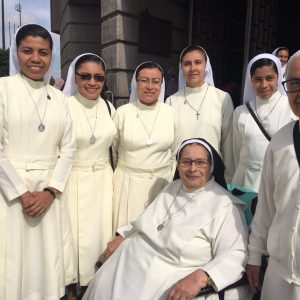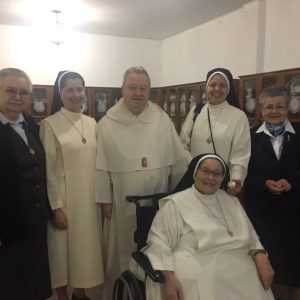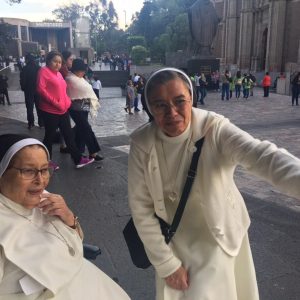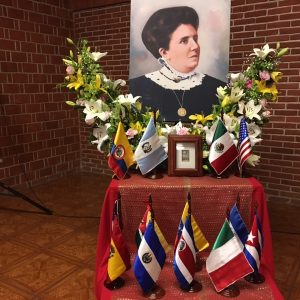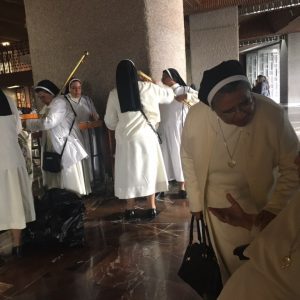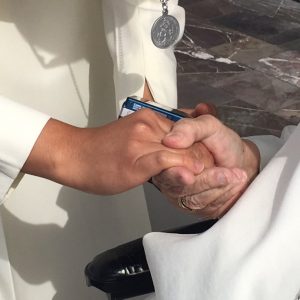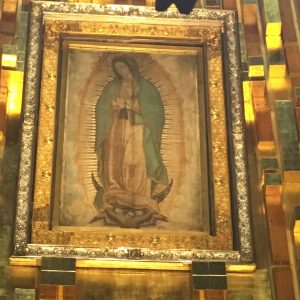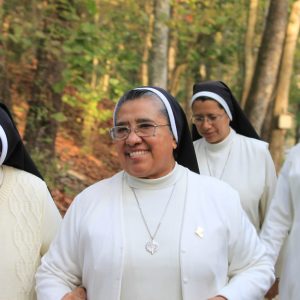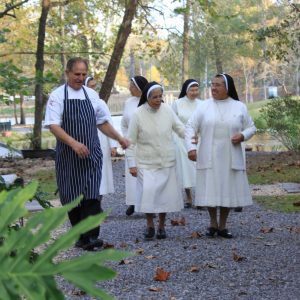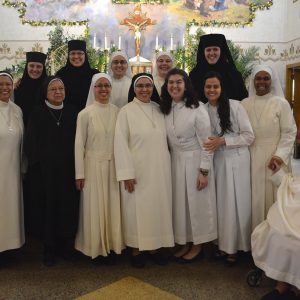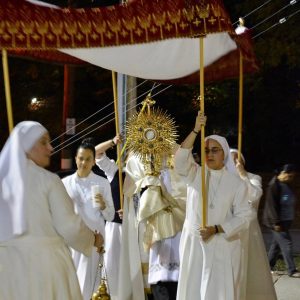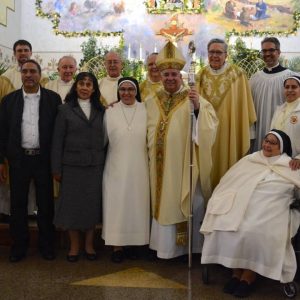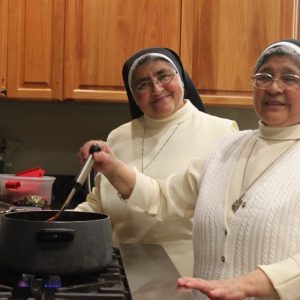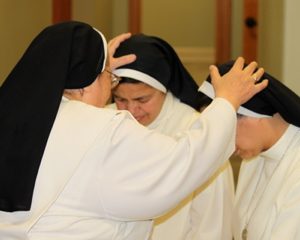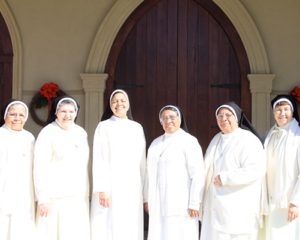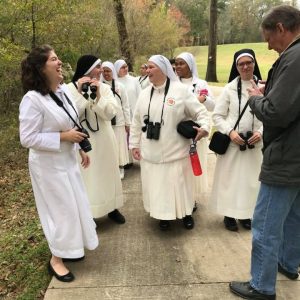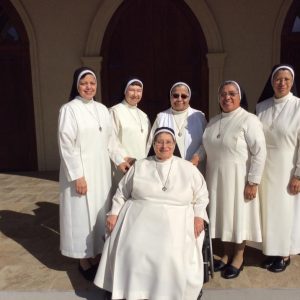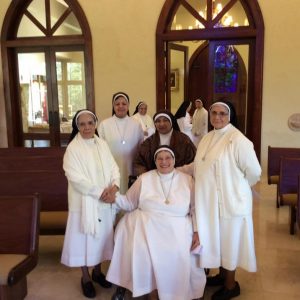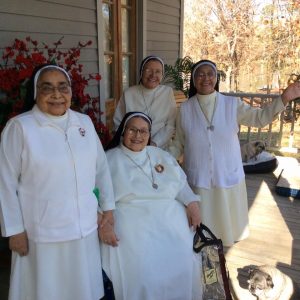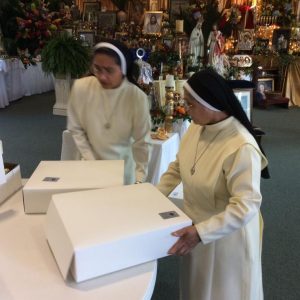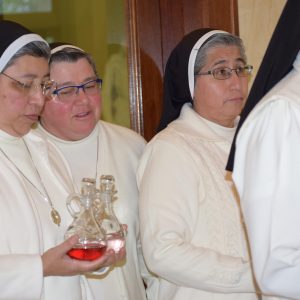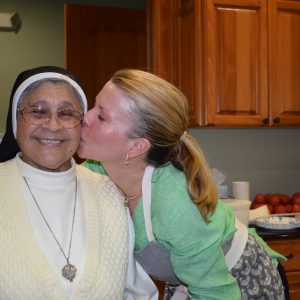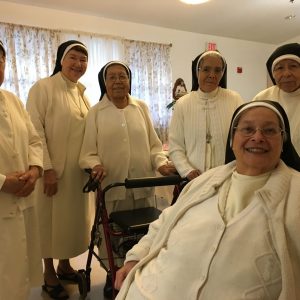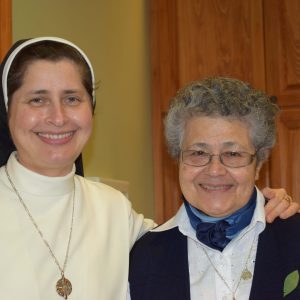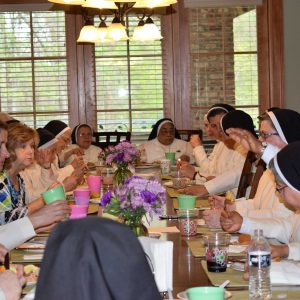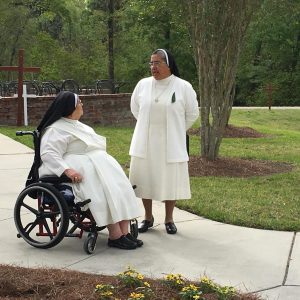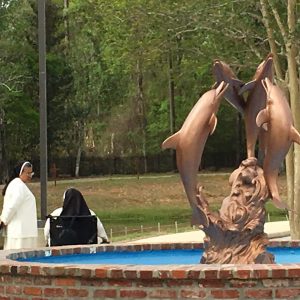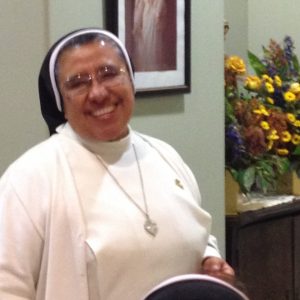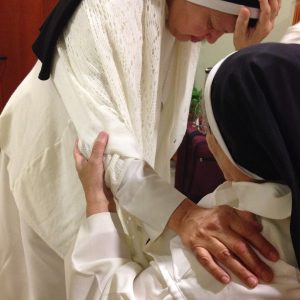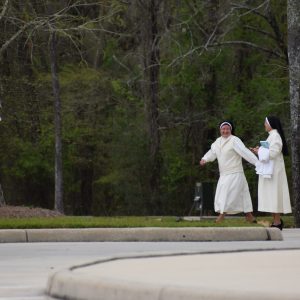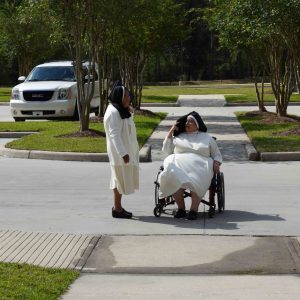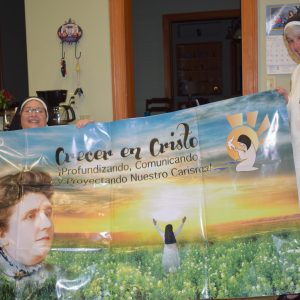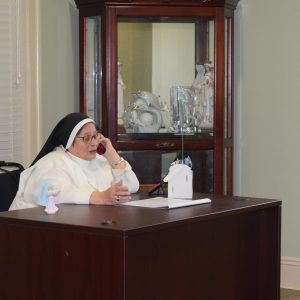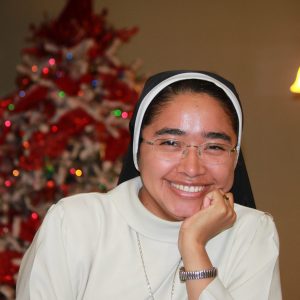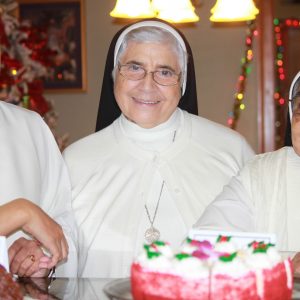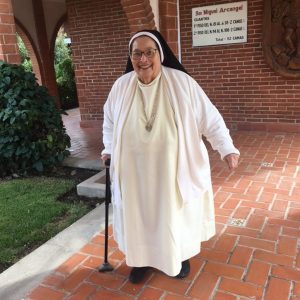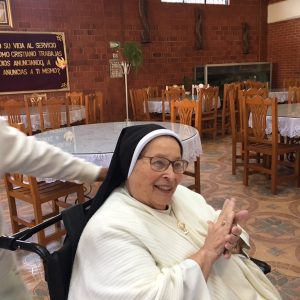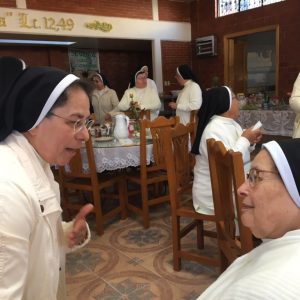The Mercedarian Sisters of the Blessed Sacrament are a Religious Institute of Pontifical Right, meaning that they are directly under the authority of the Holy See. This decree of Pontifical Right is given through the Congregation for Religious and Secular Institutes. Constitutions are submitted directly to the Holy See for approval, and other matters of law such as perpetual vows or promises, and dispensations, must be submitted to the Holy See for approval.
The Mercedarian Sisters were founded in Mexico City by the Venerable Maria del Refugio Aguilar in 1910. The Mother Foundress, enamored of Jesus in his Eucharistic Mystery, wanted to found an Institute whose members would dedicate their lives to loving Jesus in the Blessed Sacrament and making reparation for the many offenses He receives in this sacrament.
At the same time, Maria del Refugio wanted to foster a quality catholic education which would foster the blossoming not only of academic knowledge, but a blooming of virtues and the strengthening of character. There are approximately 680 sisters staffing 83 schools and missions in 13 different countries: United States, Mexico, Africa, Italy, Spain, El Salvador, Costa Rica, Colombia, Chile, Venezuela, Guatemala, Cuba and Mozambique.
Today, the Sisters continue to respond to their charism in the Church by providing children and youth with a Christian education in schools and catechetical centers. They also visit the sick and the imprisoned and assist in various parish and diocesan ministries. As consecrated women, the Sisters strive ardently in thirteen countries to extend their Eucharistic Mercedarian spirit of adoration and praise to Jesus in the Eucharist, and filial love and devotion to our Lady of Mercy, Mother of the Redeemer.



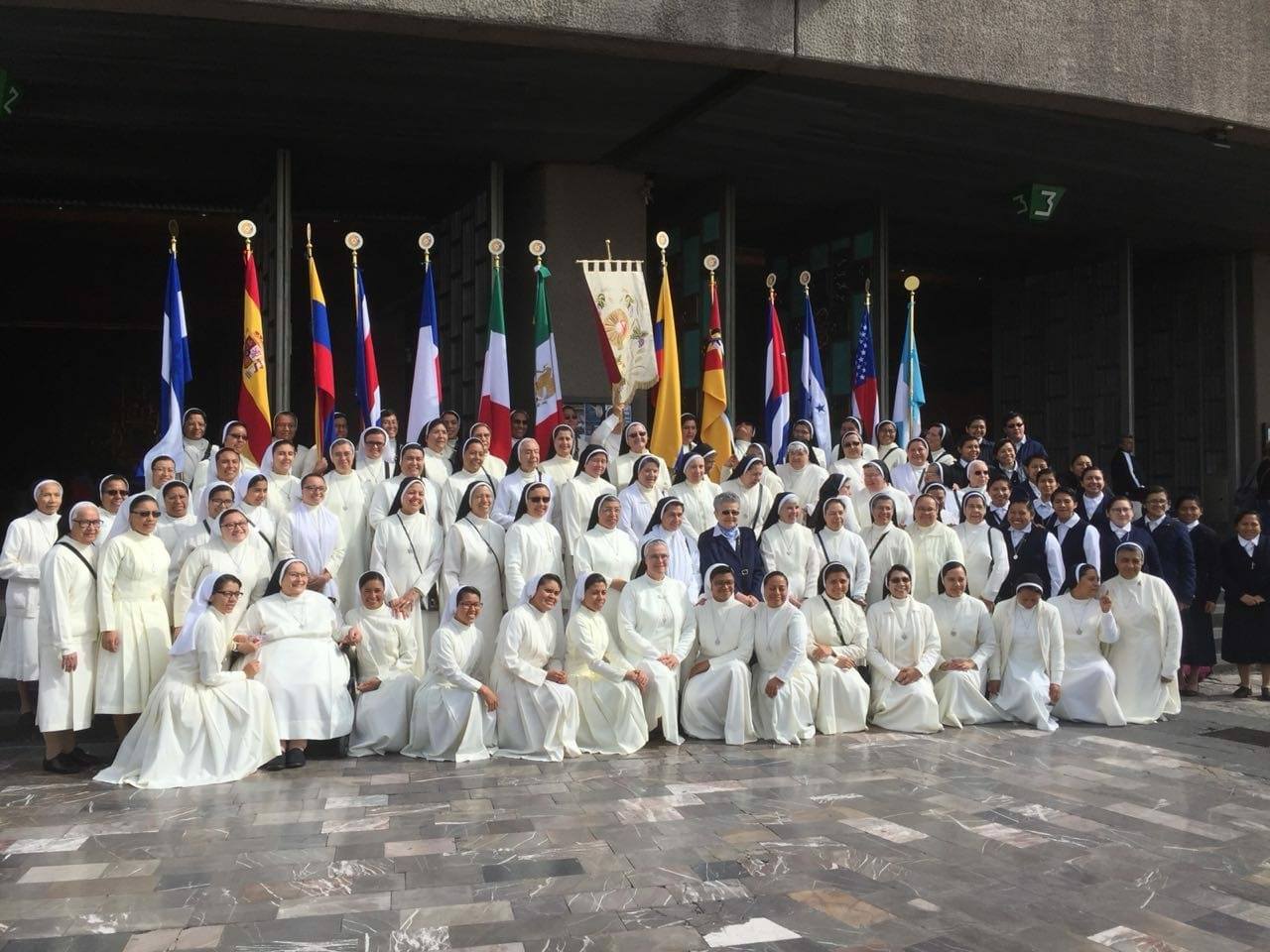
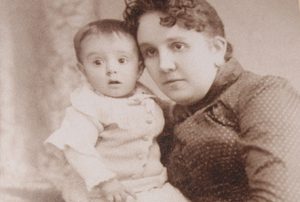
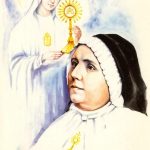 The basis of her educational program was that at the center of all knowledge lay God and that truly Christian life was not possible without the presence of the Eucharist and the protection of Mary. Her schools would offer a comprehensive, structured and practical education and include the latest methods of instilling good habits in the pupils and teaching them to control their passions by means of willpower and leading orderly lives. The teaching of morality would be based on seeking the remedy for everything in God’s law, in prayer and in the sacraments, especially the Holy Eucharist. The nuns and teachers practiced precautionary vigilance because they were aware that they were responsible before God for the children’s purity and so should steer them away from any opportunities for sinning.
The basis of her educational program was that at the center of all knowledge lay God and that truly Christian life was not possible without the presence of the Eucharist and the protection of Mary. Her schools would offer a comprehensive, structured and practical education and include the latest methods of instilling good habits in the pupils and teaching them to control their passions by means of willpower and leading orderly lives. The teaching of morality would be based on seeking the remedy for everything in God’s law, in prayer and in the sacraments, especially the Holy Eucharist. The nuns and teachers practiced precautionary vigilance because they were aware that they were responsible before God for the children’s purity and so should steer them away from any opportunities for sinning.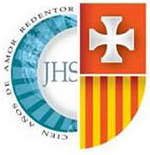 Towards the end of 1918, the Mercedarian Father Alfredo Scotti turned up with instructions to check up on how the community was being run. Until then the life of the community had been organized on an informal basis and what was still needed was a constitution. Maria del Refugio drew up some rough drafts in which she defined her ideas on religious life. The Apostolate of the Blessed Sacrament had only three members when it was founded; by January 1919 there were fifteen and one year later twenty-seven. Among the young girls who entered the community at that time was Maria’s daughter, Refugio Cancino, who until then had led an ordinary life as a laywoman. In August 1920, she decided to enter the Institute founded by her mother and on October 12th she took the habit, assuming the religious name of Maria Teresa. Many sister houses were opened in 1919 and some of these foundations suffered extreme poverty and food shortages. However, Maria del Refugio was happy to put up with the precarious conditions, reminding herself of St. Teresa’s maxim that “all principles are painful”, and remaining true to her conviction that once one had started something, one should persevere with it no matter what difficulties might arise, if it was the will of God and the Superiors.
Towards the end of 1918, the Mercedarian Father Alfredo Scotti turned up with instructions to check up on how the community was being run. Until then the life of the community had been organized on an informal basis and what was still needed was a constitution. Maria del Refugio drew up some rough drafts in which she defined her ideas on religious life. The Apostolate of the Blessed Sacrament had only three members when it was founded; by January 1919 there were fifteen and one year later twenty-seven. Among the young girls who entered the community at that time was Maria’s daughter, Refugio Cancino, who until then had led an ordinary life as a laywoman. In August 1920, she decided to enter the Institute founded by her mother and on October 12th she took the habit, assuming the religious name of Maria Teresa. Many sister houses were opened in 1919 and some of these foundations suffered extreme poverty and food shortages. However, Maria del Refugio was happy to put up with the precarious conditions, reminding herself of St. Teresa’s maxim that “all principles are painful”, and remaining true to her conviction that once one had started something, one should persevere with it no matter what difficulties might arise, if it was the will of God and the Superiors.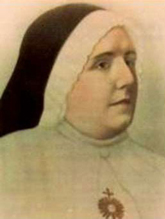 The memory of a woman of exemplary virtue who was devoted to the Blessed Sacrament and anxious to share that devotion wherever she went, and indeed with the whole world, was a source of comfort to her religious daughters, friends, and acquaintances and filled them with hope. It was not long before they were to begin to experience the fruits of her intercessions on their behalf in heaven. During the course of the following years, the Institute of the Mercedarian Sisters of the Blessed Sacrament was to undergo a remarkable development. Within ten years the number of houses and personnel had doubled, and on July 22, 1948, Pope Pius XII granted it a laudatory decree. The Foundress’ saintly reputation would continue to grow as more and more people witnessed a change in their way of life after becoming acquainted with the life and works of Maria del Refugio Aguilar y Torres.
The memory of a woman of exemplary virtue who was devoted to the Blessed Sacrament and anxious to share that devotion wherever she went, and indeed with the whole world, was a source of comfort to her religious daughters, friends, and acquaintances and filled them with hope. It was not long before they were to begin to experience the fruits of her intercessions on their behalf in heaven. During the course of the following years, the Institute of the Mercedarian Sisters of the Blessed Sacrament was to undergo a remarkable development. Within ten years the number of houses and personnel had doubled, and on July 22, 1948, Pope Pius XII granted it a laudatory decree. The Foundress’ saintly reputation would continue to grow as more and more people witnessed a change in their way of life after becoming acquainted with the life and works of Maria del Refugio Aguilar y Torres.